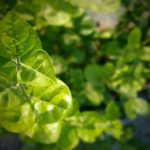Transform your outdoor space with these woodland gardening ideas to create a natural and tranquil retreat right in your own backyard. From embracing the wild and untamed look of woodland gardens to enhancing biodiversity and celebrating the beauty of every season, there are endless possibilities for creating a stunning woodland garden.
Woodland gardening involves the art of creating a naturalistic landscape that mimics the look and feel of a woodland environment, providing numerous benefits for both the gardener and the environment. Whether you have a small urban yard or a sprawling rural property, the appeal of a woodland garden lies in its ability to transport you into a serene and peaceful natural setting.
In this article, we will explore how to choose the right plants for woodland gardening, create a naturalistic design that incorporates elements like rocks and pathways, enhance biodiversity in your garden, maintain your woodland oasis while balancing it with low maintenance needs, incorporate woodland elements into hardscape designs, celebrate seasonal changes, and embrace the tranquility of this unique style of gardening.
Choosing the Right Plants for Woodland Gardening
Woodland gardening is a unique and rewarding way to create a natural, picturesque landscape in your outdoor space. One of the key aspects of creating a successful woodland garden is choosing the right plants. Whether you have a small shady spot or a larger wooded area, selecting the perfect plants will help you achieve the desired look and feel for your woodland garden.
Native Plants for Woodland Environments
When it comes to woodland gardening ideas, incorporating native plants is crucial. These are plants that naturally thrive in your local environment, making them well-suited for the specific conditions of a woodland garden. Native plants also play an important role in supporting local ecosystems and wildlife. Examples of popular native woodland plants include ferns, trilliums, violets, and various species of native wildflowers.
Shade-Loving Plants for Woodland Gardens
Since most woodland gardens are characterized by dappled sunlight or full shade, it’s essential to choose shade-loving plants that can thrive in these conditions. Many popular shade-loving options include hostas, astilbes, bleeding hearts, and Japanese forest grass. These plants not only add visual interest to your garden but also contribute to its overall health and biodiversity.
Diverse and Visually Appealing Plant Palette
Creating a diverse plant palette is key to achieving a visually appealing woodland garden. By incorporating different textures, colors, heights, and bloom times into your selection of plants, you can create an enchanting display that evolves throughout the seasons.
Consider including a mix of perennials, shrubs, groundcovers, and trees to add depth and interest to your woodland garden. By carefully selecting the right mix of plant species, you can bring forth the beauty of nature within your own backyard while fostering biodiversity and enhancing the overall ecosystem.
Creating a Naturalistic Design
When it comes to woodland gardening ideas, creating a naturalistic design is essential for achieving the serene and untamed look of a woodland garden. To achieve this, it’s important to embrace the wild and organic feel of nature while incorporating key elements that enhance the overall aesthetics of the garden. Here are some tips for designing a naturalistic woodland garden:
- Embrace native plants: Choose native plants that thrive in woodland environments, such as ferns, hostas, and wildflowers. These plants not only blend seamlessly with the natural surroundings but also provide essential habitats for local wildlife.
- Incorporate natural features: Integrate elements like rocks, logs, and pathways into your garden to create a sense of depth and texture. These features not only add visual interest but also mimic the natural environment found in woodlands.
- Design with a purpose: When creating your woodland garden, consider how you can design it to look like it belongs in the woods. Instead of orderly rows or geometric shapes, opt for irregular plantings and winding pathways to mimic the look and feel of a true woodland setting.
By taking these factors into account when designing your woodland garden, you can create a space that feels like an extension of the surrounding forest while still maintaining a sense of intentional design and visual appeal. Woodland gardening ideas should always prioritize creating a space that looks beautiful while remaining closely connected to nature.
Enhancing Biodiversity in Your Woodland Garden
When it comes to woodland gardening, one of the key principles is to enhance biodiversity by creating a space that attracts and supports a wide range of wildlife. By choosing the right plants and creating habitats for birds, insects, and small mammals, you can foster a healthy ecosystem right in your own backyard. Here are some tips for enhancing biodiversity in your woodland garden:
- Plant native species: One of the best ways to attract wildlife to your woodland garden is by planting native species that provide food and habitat for local animals. Consider adding plants like wildflowers, berry-producing shrubs, and trees that are native to your region. Not only will these plants support biodiversity, but they are also well-suited to the natural conditions of a woodland environment.
- Create diverse habitats: Think about the different types of wildlife you want to attract to your garden and create habitats that cater to their needs. This could include adding birdhouses and feeders for birds, building insect hotels or providing areas of dense vegetation for sheltering small mammals.
- Minimize chemical use: To maintain a healthy ecosystem in your woodland garden, it’s important to minimize the use of chemicals. Instead of relying on pesticides and herbicides, focus on promoting natural pest control by encouraging beneficial insects and predators. Additionally, choose organic fertilizers and compost to nourish your plants without harming the surrounding wildlife.
By following these tips and incorporating biodiversity into your woodland gardening ideas, you can create a vibrant and thriving ecosystem right outside your door while supporting the local environment.
Maintaining a Woodland Garden
Managing Weeds
One of the key challenges in maintaining a woodland garden is managing weeds without disrupting the natural look and feel of the space. Instead of using chemical herbicides, consider using mulch to suppress weed growth.
Organic mulches like wood chips or shredded bark not only help prevent weeds from taking hold but also add to the naturalistic look of the garden. Regularly hand weeding is also essential to keep on top of any pesky intruders that manage to break through the mulch barrier.
Controlling Invasive Species
Invasive plant species can quickly take over a woodland garden if left unchecked, outcompeting native plants and disrupting the delicate balance of the ecosystem. Regular monitoring and quick action are key to controlling invasive species in your woodland garden.
Be sure to familiarize yourself with common invasive plants in your area and take steps to remove them as soon as they appear. Avoid planting known invasives in your garden, and instead opt for native species that will support local wildlife and thrive in the woodland environment.
Low-Maintenance Strategies
Creating a low-maintenance woodland garden is possible with careful planning and plant selection. Opting for native plants that are well-suited to your local climate and soil conditions can reduce the need for watering, fertilizing, and pest control. Additionally, incorporating a layer of leaf litter or fallen branches into your garden beds can mimic the natural forest floor, helping to suppress weed growth and retain moisture while adding an authentic touch to your woodland landscape.
By implementing these maintenance strategies, you can create a thriving woodland garden that requires minimal upkeep while preserving its natural beauty and ecological diversity. Taking a proactive approach to weed management, invasive species control, and low-maintenance design will allow you to fully enjoy all that your woodland garden has to offer throughout every season.
Incorporating Woodland Elements Into Hardscape
Woodland gardening ideas can be enhanced by incorporating natural elements into the hardscape. Designing naturalistic paths and walkways is a great way to seamlessly blend your garden with the surrounding woodland environment. Utilizing materials like stone, wood, and gravel can create a sense of harmony between the built environment and nature, while also providing functional pathways for navigating the garden.
Using natural materials such as stone to build walls or decorative structures can further enhance the woodland feel of your garden. These features not only add visual interest but also provide opportunities for planting pockets and habitats for wildlife, further enhancing the biodiversity of your woodland garden.
It’s important to consider the overall mood and atmosphere you want to create in your woodland garden when implementing hardscape elements. Whether you desire a peaceful retreat or a space for exploration, thoughtful design choices can help achieve those goals. When done well, incorporating woodland elements into the hardscape can elevate your garden from simply beautiful to a truly immersive experience in nature.
| Woodland Element | Hardscape Feature |
|---|---|
| Natural stone | Pathways, walls, decorative structures |
| Wood | Fences, pergolas, seating areas |
| Gravel | Walkways, borders, accent areas |
Celebrating the Seasons in a Woodland Garden
Woodland gardens are not only beautiful in themselves, but they also lend themselves to a variety of seasonal displays. By selecting the right combination of plants, you can create a garden that is interesting and visually appealing all year round. When planning your woodland garden, it’s important to consider the changing seasons and how different plants can contribute to the overall aesthetic.
One key aspect of celebrating the seasons in a woodland garden is choosing plants that provide interest year-round. This means selecting species that offer something unique in each season, whether it’s colorful blossoms in spring, lush green foliage in summer, rich jewel tones in autumn, or architectural interest in winter. Incorporating evergreen plants alongside those that go dormant during winter ensures that the garden maintains its appeal even when other plantings have died back.
In addition to choosing plants for their seasonal interest, embracing the beauty of changing foliage and blooms is essential for creating a dynamic woodland garden. While some flowers may only bloom during certain times of the year, there are many options for foliage that undergoes striking transformations as the seasons change.
For example, Japanese maples exhibit vibrant reds and oranges in fall before dropping their leaves, while perennials like ferns show off delicate fronds in spring and summer before going dormant in winter.
To achieve this intentional variety throughout the year without creating a haphazard look, consider creating distinct planting areas within your woodland garden dedicated to each season’s display. By doing so, you can ensure that certain spots will truly shine at specific times without overshadowing one another year-round.
| Celebrating the Seasons | Woodland Garden |
|---|---|
| Choosing plants with year-round interest | Selecting species that offer unique features throughout each season |
| Embracing changing foliage and blooms | Incorporating plants with striking transformations as seasons change |
| Creative hardscaping ideas | Integrating paths and walkways using natural materials like stone and wood to complement seasonal changes |
Embracing the Tranquility of Woodland Gardening
In conclusion, embracing the tranquility of woodland gardening offers a myriad of benefits and opportunities for creating a unique and naturalistic outdoor space. By exploring this concept, gardeners can enjoy the therapeutic benefits of spending time in a woodland garden, as well as contribute to the enhancement of biodiversity in their own backyard.
Choosing the right plants, maintaining the garden, and incorporating woodland elements into hardscape are all important aspects to consider when designing a woodland garden that promotes relaxation and contemplation.
One key aspect of woodland gardening is selecting native plants that thrive in woodland environments and shade-loving plants that contribute to the natural appeal of the garden. By doing so, gardeners will be able to attract wildlife and create habitats for birds, insects, and small mammals, ultimately fostering a healthy ecosystem within their own outdoor space.
Additionally, managing weeds and invasive species while creating a low-maintenance woodland garden allows for balance between maintaining a natural look and ensuring the garden thrives with minimal effort.
Furthermore, celebrating the seasons in a woodland garden by choosing plants that provide interest year-round allows for an ever-changing landscape that is enjoyable to experience regardless of the time of year. Creating spaces within the garden for relaxation and contemplation adds another layer to the tranquil appeal of woodland gardening.
Overall, embracing this style of gardening offers an opportunity to connect with nature and enjoy a peaceful retreat right in your own backyard. Incorporating these ideas will not only create a beautiful environment but also provide a peaceful oasis for owners to unwind in.
Frequently Asked Questions
How Do You Garden in a Wooded Area?
Gardening in a wooded area requires careful consideration of the existing trees and their shade patterns. It’s important to choose plants that thrive in low light conditions and acidic soil. Clearing out debris, fallen leaves, and other organic matter regularly is also essential.
What Tree Is Best for Woodland Garden?
The best tree for a woodland garden is one that is native to the area and can thrive in the shade of taller trees. Trees like dogwood, redbud, or serviceberry are good choices as they add visual interest without overpowering the space or competing with existing trees.
What Are the Characteristics of a Woodland Garden?
A woodland garden typically has a natural and informal look, with a mix of wildflowers, ferns, and shade-loving perennials. It usually has dappled sunlight, moist soil, and plenty of organic matter from fallen leaves. The goal is to create a peaceful and serene environment that mimics the beauty of a natural woodland setting.

Welcome to my gardening blog! I am passionate about plants and enjoy sharing my knowledge and experiences with others. In this blog, I will write about everything related to gardening, from tips on how to get started to updates on my own garden projects.





